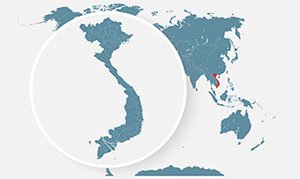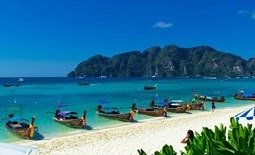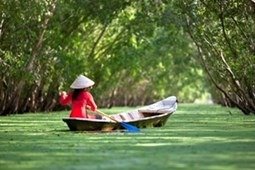Contents
ToggleSon Doong – A Legendary Discovery
Deep in the jungles of Phong Nha–Ke Bang National Park, Son Doong Cave remained hidden from the world for centuries. Local villager Ho Khanh stumbled upon its entrance in 1990 while seeking shelter from a storm, but the dense wilderness kept it a secret. Nearly two decades later, in 2009, a team of British cavers led by Howard Limbert returned with Ho Khanh to re-locate and explore the cave.
What they found changed the world of speleology forever: a cave so massive it could fit a 40-story skyscraper inside. Son Doong dethroned Malaysia’s Deer Cave, and in 2013, Guinness World Records officially recognized it as the largest natural cave on Earth.
Key facts about Son Doong:
- 🌍 Part of a network of 150+ caves stretching toward the Laos border.
- ⏳ Estimated to have formed 3 million years ago during the Permian–Triassic period.
- 📖 Name origin: “Son” means mountain, while “Doong” refers to a nearby valley inhabited by the Bru–Van Kieu people. Together, it translates to “mountain river cave.”
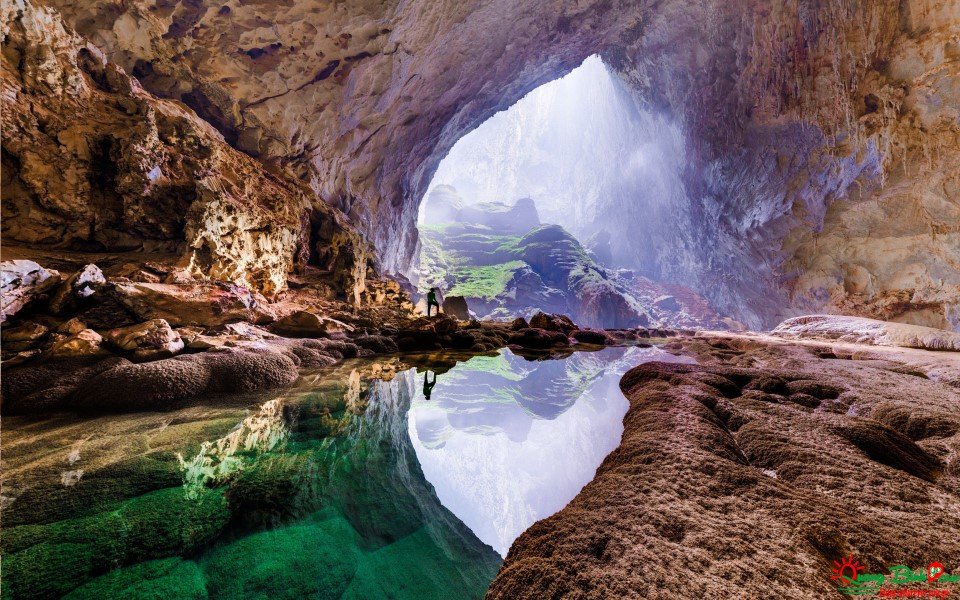
A Cave Beyond Imagination
Son Doong defies human imagination. Measuring 9 km in length, with passages soaring 200 meters high and 150 meters wide, its total volume is a staggering 36.8 million cubic meters—large enough to contain an entire city block of skyscrapers.
Inside, explorers are met with an otherworldly landscape:
- 🏔 Giant stalactites & stalagmites – including the colossal Hope and Vision, rising nearly 80 meters, possibly the tallest known stalagmite on the planet.
- 🌳 The Garden of Edam – a primeval jungle flourishing beneath collapsed cave ceilings, where sunlight streams in and mist lingers like a lost world.
- 💧 An underground river – winding through the darkness, feeding waterfalls, and carving out crystal-clear pools.
- ⚪ Cave pearls – smooth, marble-like formations created by dripping mineral-rich water over millennia.
- 🐚 Ancient fossils – embedded in limestone, some over 400 million years old, offering a glimpse into prehistoric oceans.
- 🧗 The Great Wall of Vietnam – a monumental 90-meter calcite barrier that blocked explorers for years, until 2017 when ropes and ladders were finally installed.
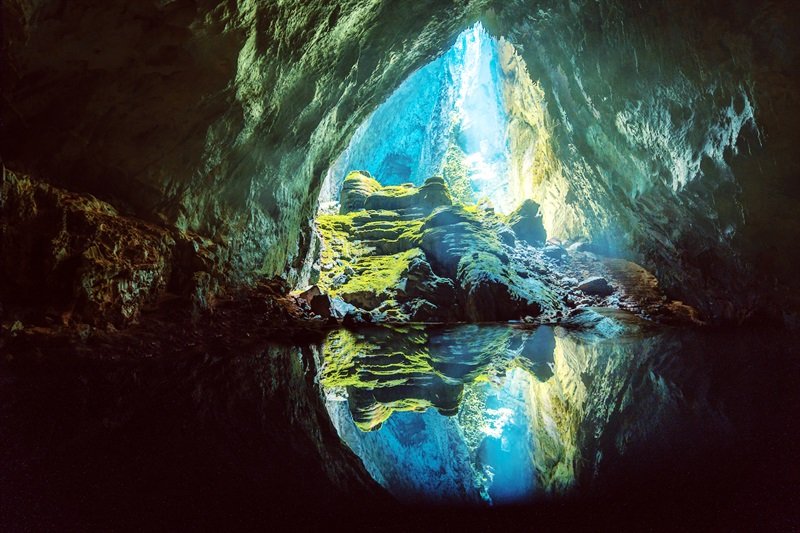
Can Tourists Visit Son Doong?
✅ Yes—but only under strict regulations.
Son Doong is not just a natural wonder, but also a fragile ecosystem. To protect it, the Vietnamese government has granted exclusive operating rights to Oxalis Adventure since 2013. This means all expeditions are highly controlled, with no independent visits allowed.
- 💰 Tour Price: Around €2,500 per person (price may vary slightly depending on season and availability). Though steep, it covers guides, safety equipment, porters, meals, and permits.
- 🧑⚕️ Health Screening: Mandatory. Because the trek involves steep climbs, river crossings, and long hikes, people with heart, respiratory, or joint conditions may not qualify.
- 👥 Group Size: Strictly limited to small groups each year (fewer than 1,000 visitors annually) to preserve the cave’s pristine condition.
- 🛡️ Safety First: Each group is supported by a professional team—guides, cave experts, porters, chefs, and even medics.
Joining a Son Doong expedition isn’t just booking a tour—it’s signing up for a once-in-a-lifetime adventure into Earth’s largest cave, while respecting conservation principles.
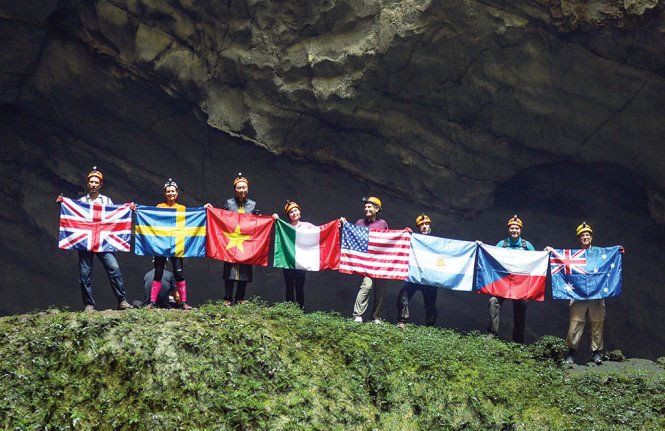
How to Explore Son Doong
Visiting Son Doong is less like sightseeing and more like an epic expedition through one of the planet’s last untouched frontiers. Here’s what the journey looks like:
🌿 Jungle Approach
Before even reaching the cave, adventurers trek through dense Phong Nha–Ke Bang rainforest, wading across rivers and mud trails. Along the way, you’ll pass Ban Doong village, home to the Bru–Van Kieu ethnic group—one of the most isolated communities in Vietnam.
🏕 Stop at Hang En Cave
The night before entering Son Doong, explorers camp inside Hang En, the world’s third-largest cave. Its cathedral-like chamber and natural skylight make it a jaw-dropping prelude to Son Doong itself.
🏔 The Son Doong Expedition
The core adventure is a 6-day, 5-night expedition, packed with challenges and awe-inspiring discoveries:
- 🚶 17 km of jungle trekking – through rugged terrain and rivers.
- 🕳️ 8 km of cave exploration – from giant stalagmites to underground rivers.
- ⛓️ 90-meter rope descent – down the Great Wall of Vietnam, one of the most thrilling moments of the journey.
- 🏕 Campsites inside the cave – sleep beneath natural skylights where jungles thrive and mist rises with the dawn.
Every step reveals a surreal world—where primeval nature, colossal geology, and human endurance converge.
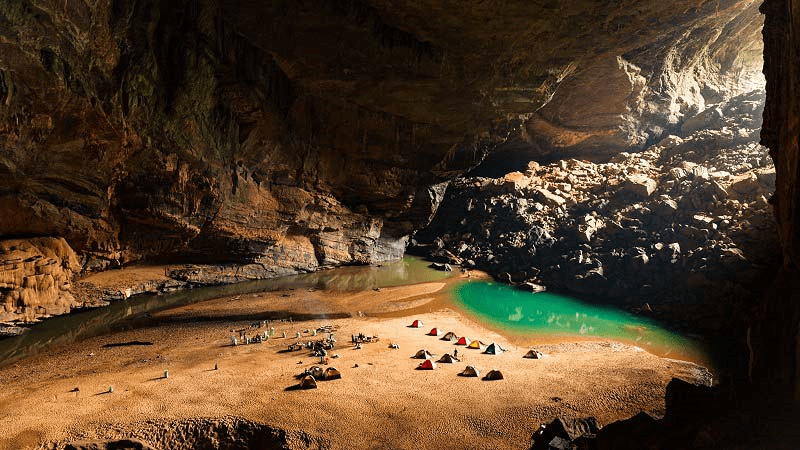
Best Time to Visit Son Doong
Son Doong tours are only available from January to August each year. From September through December, the region experiences heavy rains, rising rivers, and frequent flooding—making the cave too dangerous to explore.
Here’s what each season offers:
- 🌿 January – March: Cool weather, crystal-clear air, and lush green jungle landscapes. A great choice for trekkers who prefer cooler conditions.
- 🌸 April – May: Pleasantly mild and dry—arguably the best balance for trekking. Trails are firm, rivers are manageable, and temperatures are comfortable.
- ☀️ June – August: Hot and humid outside, but inside Son Doong the temperature remains a refreshing 22–25°C. This is the perfect season for swimming in underground rivers and enjoying the cave’s natural pools.
👉 Pro tip: Tours fill up quickly (sometimes a year in advance), so book as early as possible—especially for the spring months.
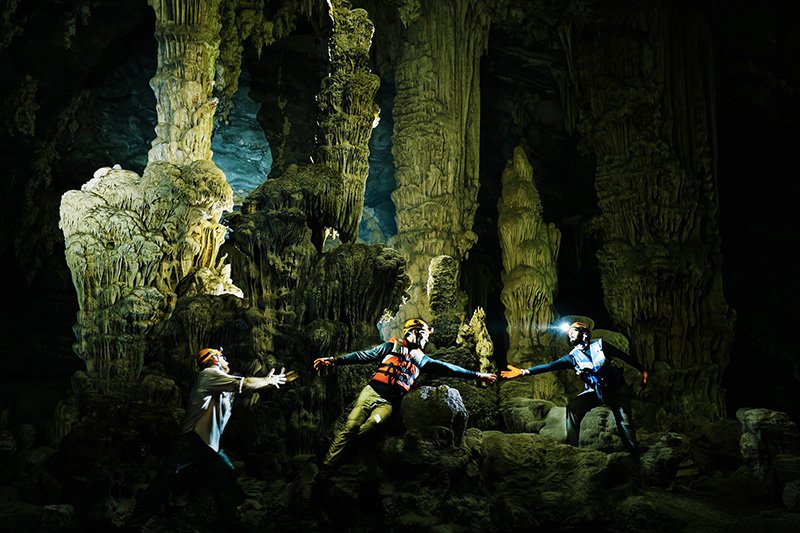
Where to Stay in Quang Binh
Most Son Doong expeditions start and end in Phong Nha–Ke Bang National Park (Quang Binh Province). Before or after your trek, it’s worth taking time to relax and explore the area, famous for its other caves like Paradise Cave and Phong Nha Cave.
Here are some of the best stays for comfort and atmosphere:
- 🏡 Son Doong Bungalow – Peaceful riverside bungalows surrounded by greenery, ideal for unwinding after a long trek.
- 🏠 Ho Khanh’s Homestay – Run by the local villager who first discovered Son Doong. Staying here offers a personal connection to the cave’s history.
- 🌾 Chay Lap Farmstay – A rustic-chic eco-lodge blending comfort with nature, offering farm-to-table dining and bicycle tours.
- 🍊 Pomelo Homestay – Cozy, affordable, and family-run, with warm hospitality and traditional Vietnamese meals.
- 🏖️ Victory Road Villas – A boutique riverside property with stylish rooms, great food, and a swimming pool—perfect for those who want luxury.
- 🌿 Oxalis Home – Run by the official tour operator, located right on the Son River, with eco-friendly design and a welcoming community feel.
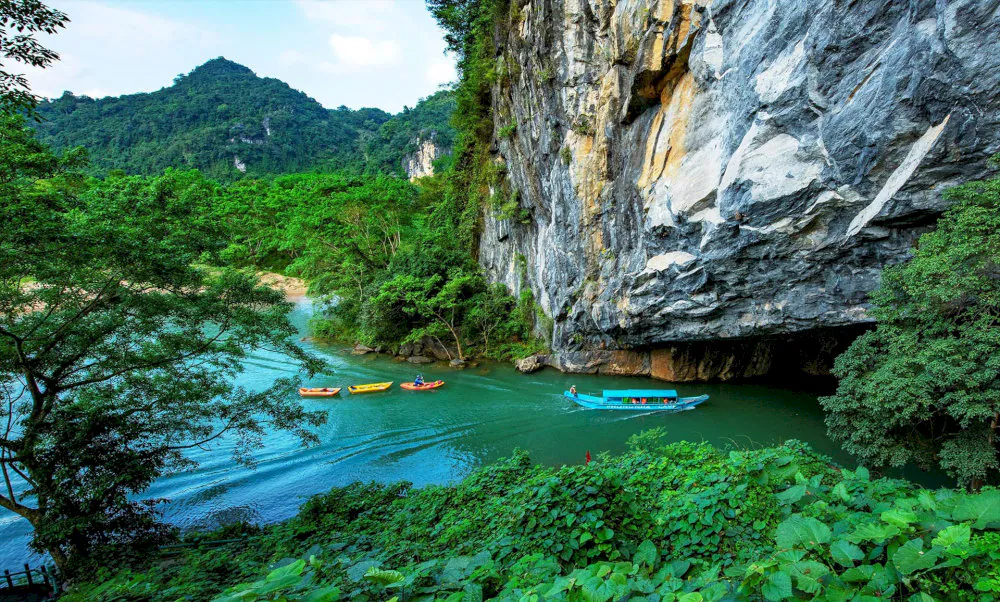
Final Thoughts
Exploring Son Doong Cave is more than an adventure—it’s a journey into one of Earth’s last great frontiers. With its towering chambers, hidden jungle, underground rivers, and surreal landscapes, Son Doong feels like another planet.

